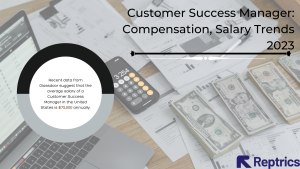As businesses look to build lasting relationships with their customers and drive sustainable growth, customer success has become a critical function for B2B SaaS companies. However, measuring the impact of customer success efforts can be challenging, with a wide range of metrics available that can be both overwhelming and confusing.
In this blog series, we’ll explore the top customer success metrics that matter most, starting with Net Retention Revenue (NRR). In upcoming blog posts, we’ll dive deeper into each of these metrics, exploring their meaning, how to calculate them, and how to use them to drive business success. Whether you’re a customer success leader, VP, or director in a B2B SaaS company, this blog series will provide you with the insights and tools you need to take your customer success efforts to the next level.
So, join us as we unlock the power of customer success metrics and discover the keys to long-term customer relationships, driving growth, and creating a competitive advantage.
Introduction
As a customer success leader in a B2B SaaS company, you know that retaining customers is crucial to your company’s success. Imagine you’re a gardener tending to a beautiful garden. Your goal is to maintain the garden’s health and beauty, ensuring that it continues to flourish over time. In the same way, customer success leaders in a B2B SaaS company are like gardeners tending to their customer base. Their goal is to maintain the health and loyalty of their customer base, ensuring that it continues to grow and flourish over time. Just as a gardener must monitor the garden’s soil quality, water levels, and sunlight exposure to keep it healthy, customer success leaders must monitor their customers’ needs, preferences, and satisfaction levels to keep them loyal. Net Revenue Retention is like the garden’s growth chart, providing a clear indication of the garden’s health and progress over time. Just as a gardener uses the growth chart to adjust their care strategies, customer success leaders can use NRR to adjust their customer retention strategies and ensure their customer base continues to thrive.In this blog, we’ll dive into what NRR is, why it’s important, and how to calculate it.
What is Net Revenue Retention (NRR)?
Net Retention Revenue (NRR) is a metric used to measure the revenue growth of a SaaS company’s existing customer base over a specific period of time, typically a year. NRR saas takes into account three revenue streams: expansion revenue, contraction revenue, and churn revenue.
Expansion revenue comes from existing customers who upgrade or purchase additional products or services. Contraction revenue comes from customers who downgrade or reduce their purchases. Churn revenue is the revenue lost from customers who cancel their subscriptions.
Why is Net Revenue Retention important?
NRR is an important metric for B2B SaaS companies because it provides insights into how much revenue the company generates from its existing customer base. If the Net Retention Revenue revenue is high, it means that the company is retaining its customers and generating revenue from them through upsells and cross-sells. A high NRR revenue also indicates that the company is providing excellent customer service and support, which leads to customer loyalty.
On the other hand, if the NRR is low, the company is losing revenue from its existing customer base. This could be due to poor customer service or support, lack of product innovation, or a competitor offering a better solution. A low Net Retention Revenue is a warning sign that the company needs to improve its customer retention strategies.
In times of economic uncertainty, businesses may experience a decline in revenue due to reduced demand, decreased purchasing power, or other factors. In such a scenario, retaining existing customers becomes even more critical for the survival and growth of a B2B SaaS company. This is where Net Retention Revenue (NRR) becomes a crucial metric to track.
- Net Retention Revenue (NRR) provides insights into the revenue generated from the existing customer base, making it a crucial metric to track during a recession.
- NRR considers the revenue generated from upsells and cross-sells, indicating whether the company’s strategies effectively increase revenue from its existing customer base.
- Net Retention Revenue provides a measure of customer loyalty, identifying potential churn risks and allowing for proactive measures to retain customers.
- In a recession, retaining existing customers becomes even more critical for the survival and growth of a B2B SaaS company.
- By offering additional products or services that complement their existing offerings, companies can increase their revenue per customer without incurring significant customer acquisition costs.
- By tracking NRR, customer success leaders can monitor their customer base’s health and progress, identify potential risks, and take proactive measures to retain their customers.
- With the right strategies in place, companies can not only survive but also thrive during difficult economic times.
Let us look at some data:
- According to a study by Bain & Company, increasing customer retention by just 5% can increase profits by 25% to 95%.
Source- Link - The average NRR for B2B SaaS companies is around 110%, meaning that their existing customer base generates 10% more revenue each year than the previous year.
Source- Link - High-performing SaaS companies with a Net Retention Revenue of 130% or higher tend to have lower customer acquisition costs and higher valuations.
Source- Link - SaaS companies with an NRR of 100% or higher are considered to have a “negative churn” rate, meaning that the revenue generated from upsells and cross-sells is greater than the revenue lost from churned customers.
Source- Link
How to calculate NRR
Calculating Net Retention Revenue is a straightforward process. First, you need to determine the starting point for the period you want to measure. This is typically the revenue generated by the customer base at the beginning of the period. Next, you need to factor in the expansion, contraction, and churn revenue streams for that period. The formula for calculating NRR is as follows:
NRR = (Ending MRR – Contraction MRR – Churn MRR) / Starting MRR x 100
Where:
Ending MRR: The total monthly recurring revenue generated by the customer base at the end of the period
Contraction MRR: The total revenue lost from customers who downgraded or reduced their purchases during the period
Churn MRR: The total revenue lost from customers who canceled their subscriptions during the period
Starting MRR: The total monthly recurring revenue generated by the customer base at the beginning of the period
For example, if a SaaS company has a starting MRR of $1 million and an ending MRR of $1.5 million, with $50,000 in contraction revenue and $100,000 in churn revenue, the NRR would be calculated as follows:
NRR = ($1.5M – $50K – $100K) / $1M x 100 = 140%
This means that the company generated 140% of its starting MRR from its existing customer base during the period.
How Reptrics can you help you in increasing your NRR
- Identifying at-risk customers: Reptrics can track customer behavior, usage, and other metrics to identify at-risk customers who may be considering churning. By proactively reaching out to these customers and addressing their concerns, companies can improve their chances of retaining them and increasing their NRR.
- Tracking customer satisfaction: Reptrics can collect feedback from customers through surveys, NPS scores, and other channels to track their satisfaction levels. By identifying areas where customers are unhappy or dissatisfied, companies can take corrective measures and improve the overall customer experience. This, in turn, can lead to higher NRR as satisfied customers are more likely to renew their subscriptions and recommend the product to others.
- Offering personalized support: Reptrics can help customer success teams provide personalized support to each customer based on their individual needs and preferences. By tailoring the support experience to each customer, companies can improve their satisfaction levels and increase the likelihood of renewal.
- Analyzing customer data: Reptrics can analyze customer data to identify trends and patterns in usage, behavior, and other metrics. By using this data to inform their retention strategies, companies can make more informed decisions about how to improve their Net Retention Revenue.
- Streamlining customer communication: Reptrics can centralize customer communication channels, making it easier for customer success teams to respond to customer inquiries and support requests in a timely and efficient manner. By providing a seamless and positive customer experience, companies can improve their NRR and reduce churn.
Net Retention Revenue Should Not Be the Sole Metric for Customer Success
While NRR is an important metric for measuring customer success, it should not be the sole metric. Some argue that focusing solely on Net Retention Revenue can create a narrow focus on revenue growth, which may lead to neglecting other critical aspects of customer success such as customer satisfaction, loyalty, and advocacy. Additionally, NRR does not take into account the potential impact of external factors such as market changes or competitive pressures on customer retention rates. Instead, customer success teams should focus on a more holistic set of metrics that include both quantitative and qualitative measures, such as customer satisfaction scores, retention rates, customer lifetime value, and advocacy. By focusing on a broader set of metrics, customer success teams can ensure that they are delivering value to customers beyond just revenue growth, building stronger relationships, and creating more sustainable business growth.
The Impact of Churn Rate and Expansion Revenue on Net Retention Revenue
NRR is calculated by subtracting the revenue lost from churned customers from the revenue gained from existing customers. However, the impact of churn rate and expansion revenue on NRR can vary significantly depending on the specific business model and customer acquisition strategy.
For example, in a high-growth B2B SaaS company, a low churn rate may be more critical to NRR than expansion revenue. In this case, retaining existing customers and minimizing churn may be more important than trying to upsell or cross-sell to customers. On the other hand, in a mature enterprise software business, expansion revenue may be a key driver of NRR. In this case, customer success teams may focus more on identifying opportunities for upselling and cross-selling to existing customers rather than acquiring new ones.
Additionally, the impact of churn rate and expansion revenue on NRR can be influenced by external factors such as market competition, changes in customer needs, and economic conditions. For example, during a recession, minimizing the churn rate may become even more critical to NRR as businesses look to cut costs and prioritize essential services.
To gain a deeper understanding of the impact of churn rate and expansion revenue on NRR, businesses need to consider a range of factors, including their customer acquisition strategy, market conditions, and business model. This can help customer success teams identify areas of improvement and develop targeted strategies for driving NRR. By analyzing and optimizing these factors, businesses can improve their NRR and achieve sustainable business growth.
Conclusion
Net Retention Revenue is a critical metric for B2B SaaS companies to track because it provides insights into customer retention and revenue growth. By tracking NRR, customer success leaders can identify areas for improvement and take action to improve customer retention and loyalty. Calculating NRR is simple, and it provides a valuable benchmark for measuring the success of customer retention strategies.









